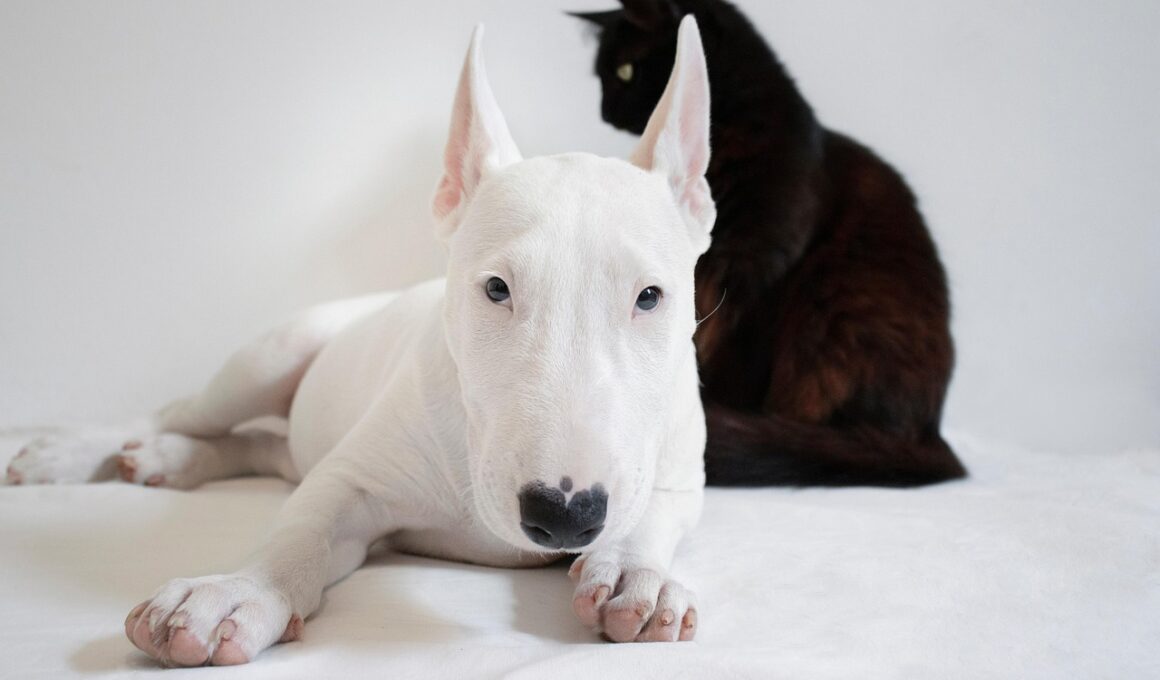Top Tips for Socializing Dogs Around Cats and Other Animals
Socialization is an essential component of your dog’s development. To effectively socialize dogs around cats and other animals, one must start the process at an early age. Begin by introducing your dog to various animals in a controlled environment. For instance, setting up playdates with calm pets can provide opportunities for your dog to learn appropriate behaviors. Use positive reinforcement, such as treats or praise, to reward good behavior. Gradually increase the duration of these interactions, allowing your dog to feel comfortable and secure. Always observe both your dog and the other pets for signs of stress or aggression. If any animal appears fearful, it’s important to separate them and try again at a later time with a calmer and more familiar environment. Also, consider enrolling your dog in training classes where they can learn alongside other animals in a friendly setting. Each successful interaction builds confidence and helps your dog understand different behaviors. Ensuring your dog is well-socialized can lead to harmonious relationships with other pets, reducing the risk of aggressive encounters in the future. Follow these guidelines to achieve success.
Establishing boundaries is crucial when socializing dogs around cats. When introducing dogs to cats, create a safe space for your cat where they can retreat. Using baby gates to separate the two animals initially helps foster a secure environment. Allow each animal to acclimate to the other’s presence by permitting them to sniff and observe from a distance. This gradual approach minimizes anxiety and allows both pets to adjust at a comfortable pace. Gradually decrease the distance over time as both animals become familiar with one another. It’s vital to supervise all interactions until you are confident both animals can coexist peacefully. Offer treats to both the dog and the cat during these sessions to create positive associations. Keep your dog on a leash initially as a precaution, and teach them commands such as “leave it” or “stay” to assist with control. Recognize any signs of stress, such as growling or hissing, and redirect their attention. Sometimes, it may take several introductions before pets feel comfortable near each other. Patience is essential, as a slow and steady approach secures long-lasting bonds.
Understanding Body Language of Pets
Understanding the body language of both dogs and cats can significantly enhance their socialization process. Dogs communicate through their posture, tail movements, and facial expressions, while cats use similar indicators like ear position and tail movements. Observing these cues can help you identify signs of discomfort or happiness in both animals. For instance, a wagging tail in a dog typically indicates excitement, whereas a cat’s puffed-up tail signals that they may feel threatened. Teach your dog to be calm around cats by rewarding them for gentle behavior. Recognizing the signs of stress allow you to intervene effectively if they occur. For example, if the cat starts hissing or the dog growls, this indicates that they need space. Redirecting the dog’s attention with toys and treats can defuse tense situations. Use consistent commands to manage your dog’s behavior as they learn how to interact appropriately with their feline housemate. Integrate these observations into your socialization practices. This understanding ensures a safer environment, nurturing trust between your pets while preventing potential conflicts.
Consistency and routine play significant roles in socializing dogs around other pets. Establish regular playdates or shared time with other animals to reinforce their social skills. Whether interacting with other dogs or cats, maintaining a schedule helps them anticipate these encounters positively. Dogs thrive on routine and familiarity, which can condition them to react better to new experiences. During playtime, use a combination of socializing tactics, including fetch, tug-of-war, or simply enjoying walks together. This keeps interactions engaging and fun. Incorporate various environments, such as parks or pet-friendly stores, into your routine to help your dog adapt to different settings and decor. On walks, encourage positive interactions with other pets and their owners, promoting an overall positive attitude toward social engagements. Ensure to reward your dog for calm behavior with treats and praise when they encounter other pets. Over time, these practices build confidence, leading to improved social interactions. It’s essential to keep in mind that each dog is unique; some may require more exposure and reinforcement than others for socialization learning.
Safe and Controlled Environments
Creating a safe and controlled environment for socializing your dog is essential to their development. Before introducing your dog to other pets, ensure both animals are healthy and vaccinated to prevent any disease transmission. Selecting neutral territory for initial introductions, such as a park, prevents territorial reactions. This neutral space fosters explorative behaviors among pets, as they don’t associate the area with their home. Encourage the dog and other pets to explore together while under your watchful eye. Use leashes or harnesses when necessary, allowing you to maintain control of the situation. Monitor your dog’s excitement levels, as overexcitement can lead to problems. Utilize calming techniques such as deep, slow breaths or a soothing voice to keep both animals calm. Allow breaks if either pet starts to show signs of stress or agitation. Gradually increase the complexity of the environment as both animals grow more comfortable. The goal is to build trust and ensure that both pets can enjoy positive experiences in various situations. Consistency in the environment makes socialization a rewarding part of their daily lives.
Reward-based training is an effective strategy for socializing dogs properly. Reward your dog for calm, polite behavior when around cats or other animals, reinforcing their good manners with treats and affirmations. Develop a training regimen that introduces various animals, gradually increasing the variety, such as small pets, birds, and other dogs. This builds a solid foundation for behavioral expectations. When your dog behaves well, reward them right away. Delayed rewards can confuse them. Also, understand that constant praise boosts their confidence and understanding of appropriate social interactions with other pets. Redirect attention towards toys or activities that engage them and provide positive outlets for their energy. Consider factorizing in each animal’s temperament when executing this training approach, as some pets may require a completely different methodology based on their past experiences with interactions. This tailored training fosters harmonious relationships and facilitates trust-building between your dog and their fellow pets. Review behavior guidelines with those involved in your dog’s socialization, ensuring everyone reinforces the same strategies. Ultimately, reward-based training leads to well-adjusted pets.
Final Thoughts on Socialization
By implementing effective socialization strategies, owners can ensure their dogs interact successfully with cats and other pets. It’s crucial to remember that each animal has its personality, which might dictate the duration and depth of socialization required. Engage in patient, consistent practices that reinforce positive experiences during these interactions. Slowly build up to more challenging scenarios as your pets become accustomed to one another. Regular training sessions will help both pets maintain their social skills and develop flexible behavior skills in various environments. Ensure you continue providing opportunities for socialization once comfort has been established. The journey of socializing dogs should be a fun and enjoyable experience for all parties involved. Furthermore, reaching out to professional trainers or behaviorists can aid in navigating difficulties or complex interactions. Sharing advice and experiences with fellow pet owners facing similar situations can yield valuable insights. Remember, the bond between your dog and other pets can flourish with dedication and consistent effort. Explore new environments together, and celebrate each small success along the way to promote lasting positive interactions.
With commitment to these methods, ensure your dog will enjoy positive interactions that lead to fulfillment and happiness.


